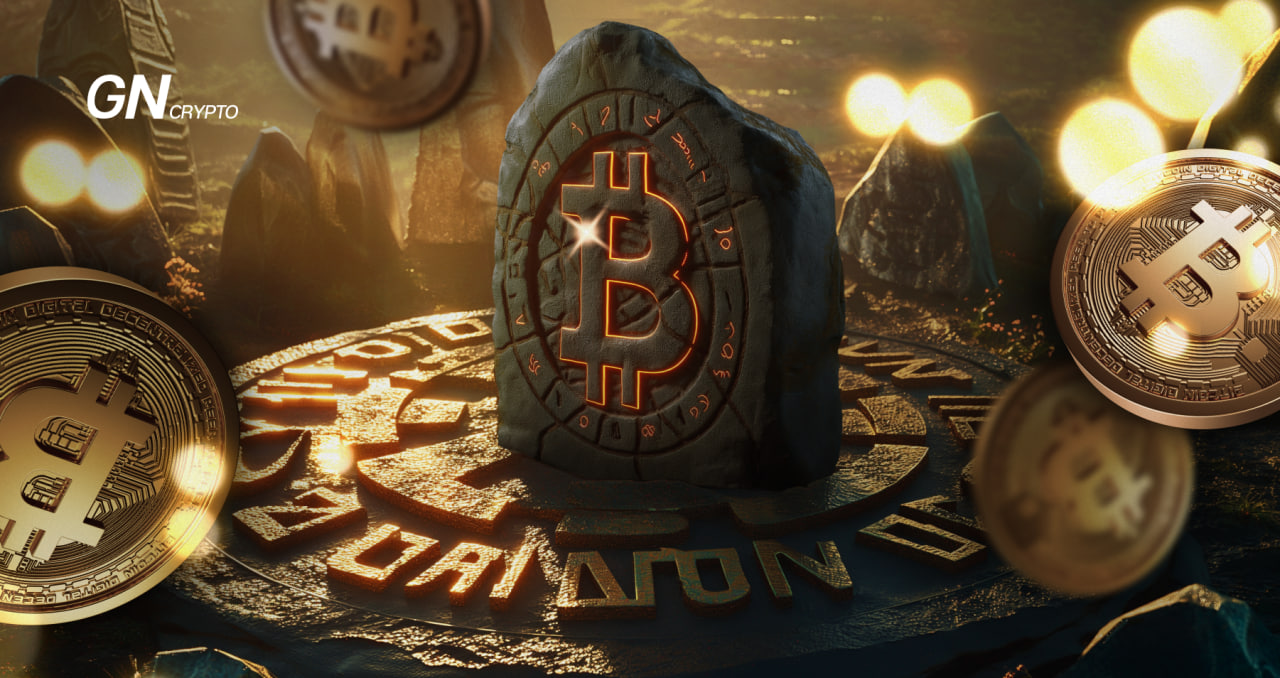Runes: Everything You Need to Know About the New Bitcoin Protocol

Six months after the announcement of the new Bitcoin protocol Runes, it’s finally ready for launch. The event is scheduled to coincide with the Bitcoin halving, around April 20, marking another evolutionary step for the world’s first payment blockchain.
On this page
When Satoshi Nakamoto released the Bitcoin white paper in 2008, the blockchain was originally designed to support a single asset—BTC. However, 15 years later, developer Casey Rodarmor broadened its functionality with the introduction of the Ordinals protocol.
The Ordinals protocol enables the creation of NFTs within the Bitcoin blockchain via Inscriptions—data fragments embedded into satoshis, the smallest units of Bitcoin. Although Ordinals enhanced the functionality of Bitcoin, the blockchain itself still did not support any other fungible tokens.
This led to the introduction of a new protocol, BRC-20, which facilitated the creation of numerous fungible tokens. As of April 2024, there are 796 such tokens.
Top 5 BRC-20 tokens. Source: coingecko.com
The BRC-20 protocol's architecture significantly burdens the network since trading these tokens generates a large number of UTXO (Unspent Transaction Outputs). This has raised concerns among Bitcoin enthusiasts, spurring the development of a new fungible token solution within the Bitcoin framework.
In September 2023, Casey introduced an alternative to BRC-20: the Runes protocol. This system minimizes the use of UTXO, thus mitigating its impact on the Bitcoin mainnet.
How Runes Work
Every Bitcoin transaction involves inputs and outputs. Upon execution, inputs are removed and outputs regenerated as UTXO, which are utilized for future transactions. The Runes protocol architecture is fundamentally based on this concept.
Token creation in Runes begins with an etching process, setting parameters such as the token's symbol, total supply, and decimal places. Tokens are linked to specific UTXOs, which can store them in varying amounts.
Runes facilitates token transfers by splitting a UTXO into multiple new ones, each holding different token amounts. This method distributes tokens among users without overloading the Bitcoin network.
Unlike other protocols that store transaction data externally, Runes embeds data directly into Bitcoin transactions using the OP_RETURN function. This strategy maintains network efficiency and eliminates the need for external data storage trust.
Post-creation, Runes tokens can be minted. This involves deploying a smart contract that specifies the rights to these tokens, with minting conferring these rights directly to users. Minting in Runes can be categorized as:
- Open Minting. This model allows all users who meet established criteria to mint new tokens.
- Closed Minting. This model restricts minting to users who meet specific conditions, such as timing, with minting ceasing once these are no longer satisfied.
Minting features within Runes are governed by conditions defined during the etching process, including:
- Total Supply: The number of tokens generated per transaction. Reaching this value halts the creation of new tokens, thereby containing their inflation.
- Amount: The number of tokens generated in each minting transaction.
- Start and End Block Heights: The period during which a specific token can be minted.
This methodology ensures minting adheres to the limitations set by the token creators, fostering a consistent and balanced token generation within the Runes protocol.
The Runes Ecosystem
The Runes ecosystem is expected to develop similarly to other blockchain protocols. Over time, it may incorporate DEXs, launchpads, and lending protocols. Familiarizing oneself with these developments now could prove advantageous for those looking to be well-positioned should Runes rise in popularity.
The Ecosystem of Bitcoin Protocol Runes. Source: twitter.com
To engage with Runes, users require a Bitcoin wallet, such as Xverse, and access to token trading platforms like Magic Eden. Although Runes is yet to be officially launched, marketplaces have already started offering Pre-Runes* to their users.
*Pre-Runes are NFT collections from Ordinals set to be converted into Runes tokens following the protocol’s launch. The most popular Pre-Runes are:
- Rune Pups: This major meme coin in the Bitcoin network saw its value increase tenfold following news of its integration with Runes.
- Runestones: More than 112,000 users have obtained NFTs from the Runestones collection via an airdrop, the requirement being the possession of three inscriptions.
- RSIC Metaprotocol: This NFT collection, featuring tokens that resemble mystical artifacts with engraved runic symbols, distributed 21,000 RSICs (Rune Specific Inscription Circuits) among Bitcoin Ordinals enthusiasts.
Regarding the purpose of the protocol, its creator, Casey Rodarmor, noted that Runes was specifically designed for meme coins. Considering the popularity of such assets in 2024, there's a possibility that Runes could emulate the success of Solana and become the next major platform for meme coins.
Final Thoughts
Runes is scheduled to launch right after the Bitcoin halving event. The choice of this specific launch date by Casey remains unclear, but community speculation suggests it may be linked to the need for new liquidity.
It’s difficult to predict the future of Runes precisely. However, given the precedents set by BRC-20 and Ordinals, it seems likely that similar trends might follow. The excitement surrounding this innovative protocol could attract a wave of new users, which might in turn increase the value of Runes assets.
The content on The Coinomist is for informational purposes only and should not be interpreted as financial advice. While we strive to provide accurate and up-to-date information, we do not guarantee the accuracy, completeness, or reliability of any content. Neither we accept liability for any errors or omissions in the information provided or for any financial losses incurred as a result of relying on this information. Actions based on this content are at your own risk. Always do your own research and consult a professional. See our Terms, Privacy Policy, and Disclaimers for more details.



























